9 Types of Wandering Jew Plants (Tradescantia) – Species and Care Tips
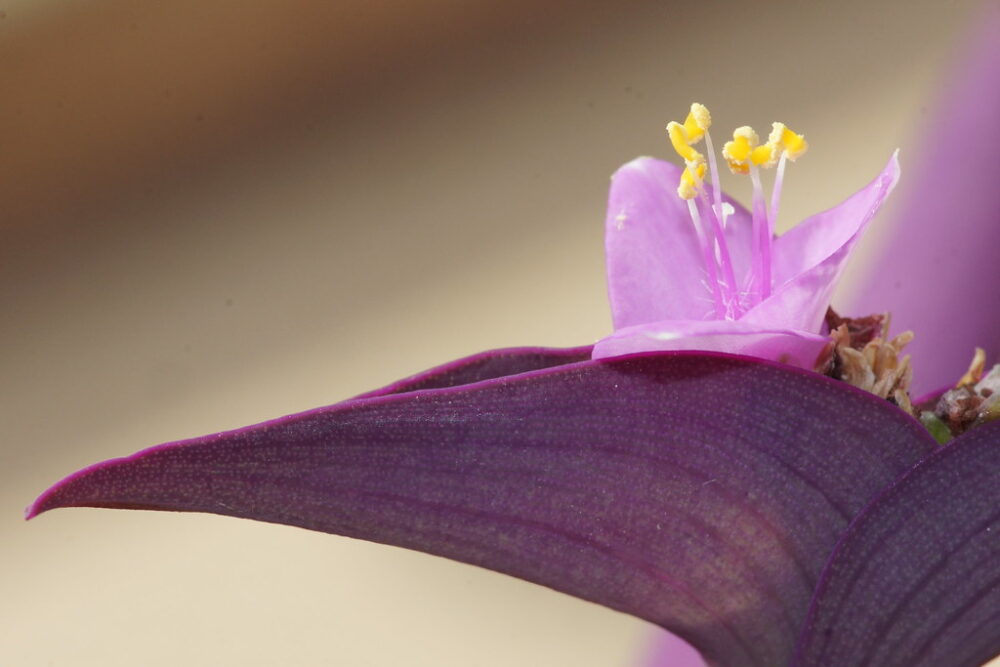
Tradescantias are beautiful ornamental plants belonging to the family of Commelinaceae. They are perennial and evergreen herbaceous plants native to the South American continent. They are commonly known by Spiderwort plants but also Wandering Jew Plants and refers to several varieties of vining plants. Moreover, these plants are mostly identifiable by their heart-shaped leaves that come in multiple colors and shapes. Tradescantias stems grow in a zigzag pattern and feature juicy leaves colored red-purple, or gold and silver. The flowers can be purple-blue, white or pink. Surprisingly some Tradescantia varieties are hardy and can be grown outdoors, others are non-hardy and can be grown indoors or in greenhouses.
In this detailed articles, you will find all different types of Wandering Jew Plants and how to care for them.
1- Tradescantia zebrina/ Tradescantia pendula
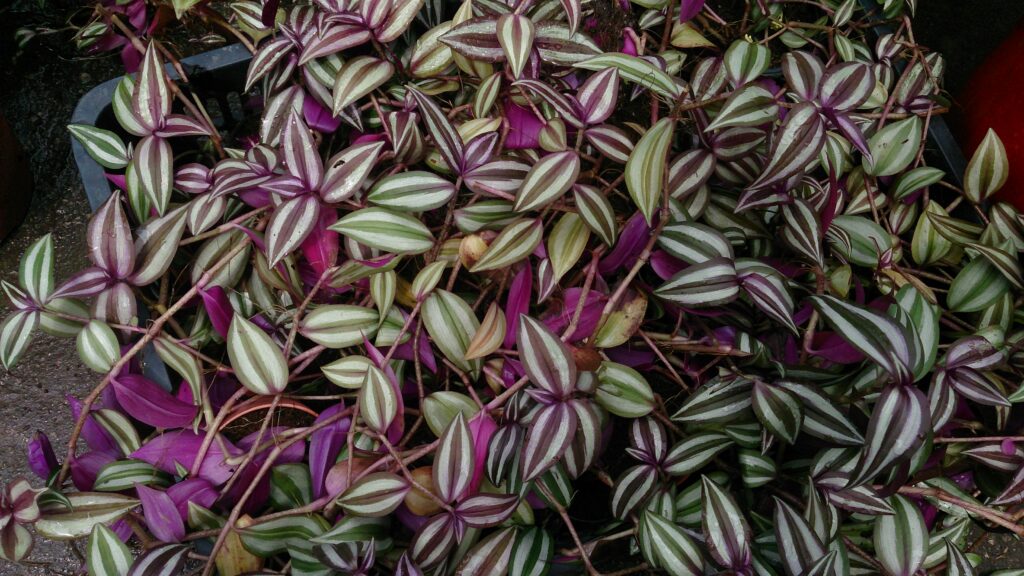
Tradescantia zebrina or purple Zebrina is a herbaceous perennial often grown as a houseplant. It is native to Mexico and Guatemala. It is also a very popular trailing plant which is easy and fast-growing and resistant to everything: drought, heat, humidity and exposure. Likewise, this attractive indoor plant has creeping or drooping fleshy stems bearing ovate, blue-green leaves. The leaves have two wide, silver longitudinal stripes and magenta lower leaf surface. Furthermore, tiny three-petaled lavender-purple flowers appear infrequently indoors. Its robustness and its ability to adapt to all environments, make this plant certainly a great choice for an attractive groundcover in warm winter areas or for an unique indoor plant which will add a colorful touch to your interiors. Give it just a moist and well-drained soil, sun or partial-shade and regular watering, once or twice a week during summer and once every two weeks during winter.
2- Tradescantia blossfeldiana/ Tradescantia cerinthoides
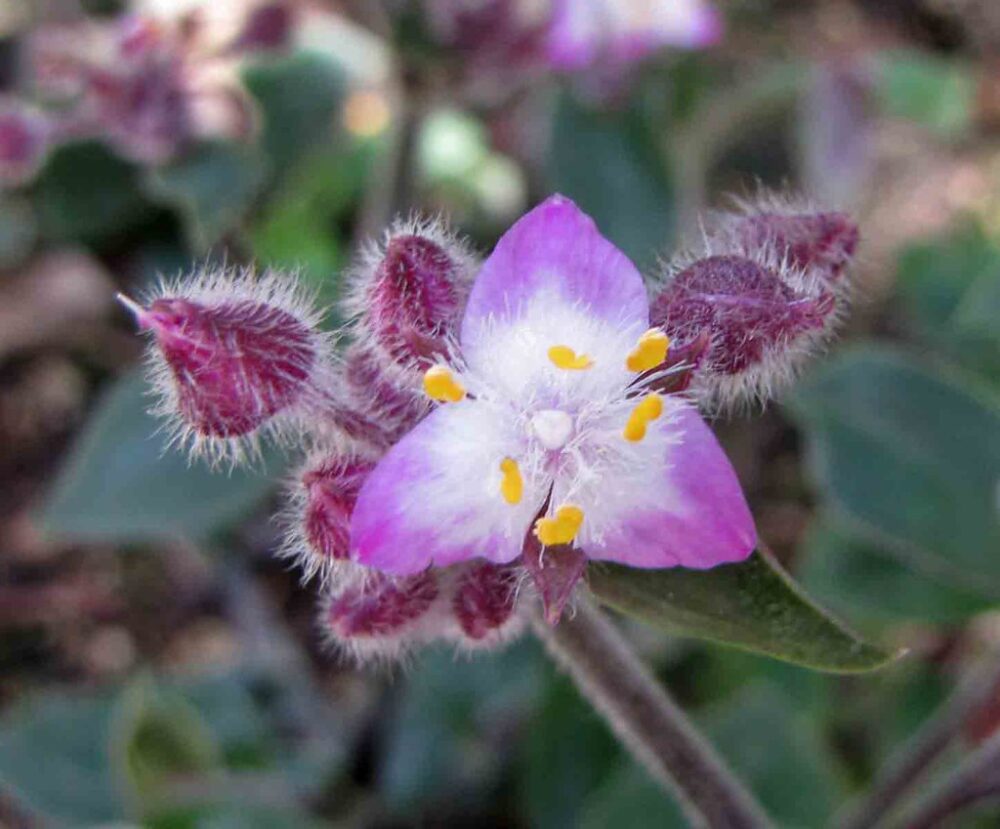
Tradescantia blossfeldiana, named commonly “ flowering inch plant”, is a hardy, creeping or ascending perennial plant originally from Argentina. It is absolutely an unique indoor plant due to its short stem that bears a rosette of fleshy, lance-shaped glossy green leaves with purple undersides. Besides, clustered pink-purple flowers with a white center appear from March to July. Moreover, you can easily propagate it from the cuttings, both in soil and water. The particularity of this plant is that it can be great inside as a houseplant and air purifier, outside in containers, or as a ground cover, or in a hanging basket. So, give it just a good indirect light, regular watering in summer and less in winter.
3- Tradescantia fluminensis
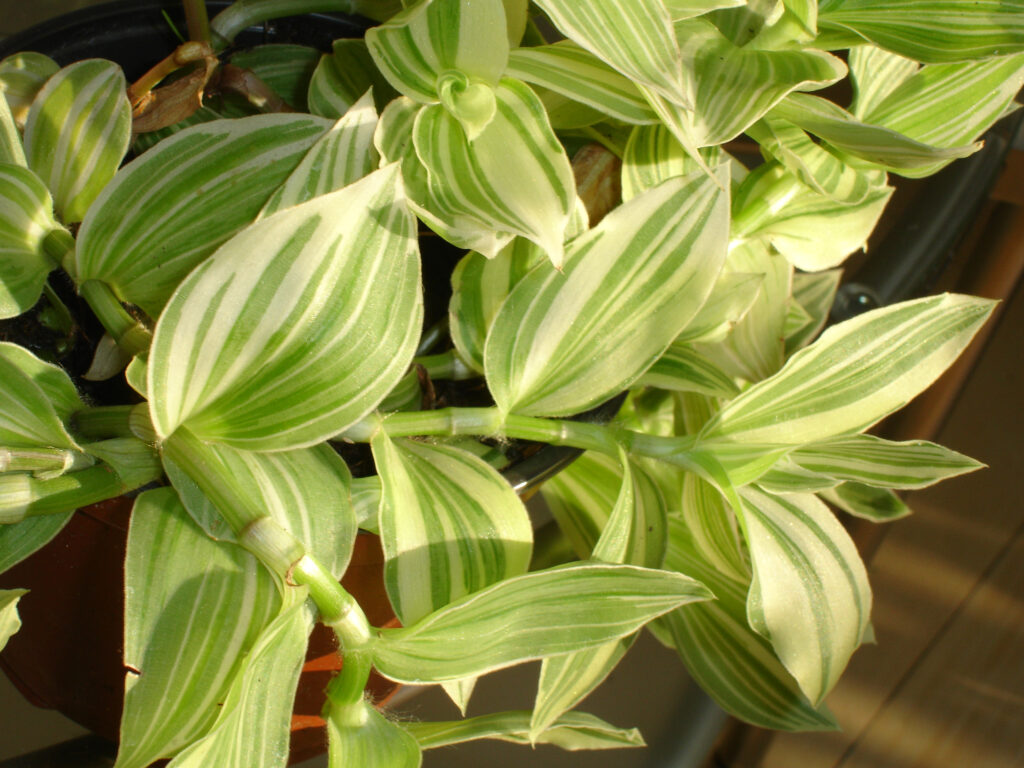
Tradescantia fluminensis, also named small-leaf spiderwort, is a perennial herb native to South America. It is a very popular houseplant and also outdoor plant or a ground cover. This plant is very hardy and can tolerate full sun and water lack which make it really the dream plant for all those who say not to have a green hand. This wild plant has been introduced and spread as a popular ornamental houseplant for its fleshy stems bearing glossy oval-shaped leaves. White flowers are borne in small clusters at stem tips. Fruits are small, 3-parted capsules containing black, pitted seeds. Best kept in a bright, humid spot, this plant can cope with some direct sunlight. Water frequently to keep the soil moist but not wet.
4- Tradescantia pallida
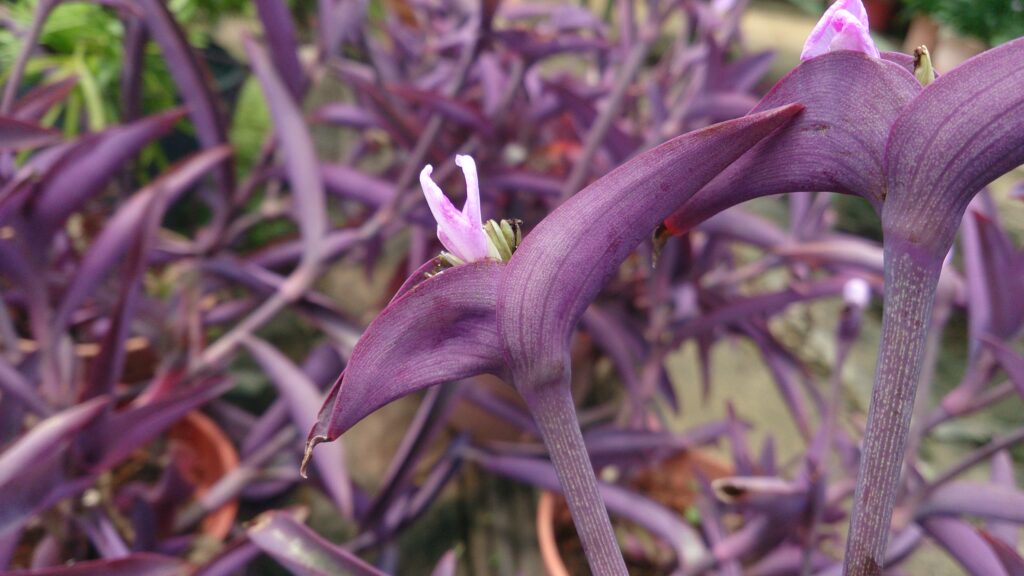
Tradescantia pallida, known by Purple Heart, Purple Queen or Wandering Jew “Purpurea”, is the most popular plant in the genus Tradescantia. This attractive plant native to Mexico is commonly grown outdoors as a popular ground cover. It has a remarkable narrow, pointed leaves with a deep royal purple color, beared by long fleshy stems. The three-petaled flowers are pink to pinkish white and open between two leaves at the end of the stems.
This species spreads vegetatively by cuttings, plant fragments, and/or discarded plants and likes bright but shaded places, moist soil and tolerates drought well.
5- Tradescantia spathacea
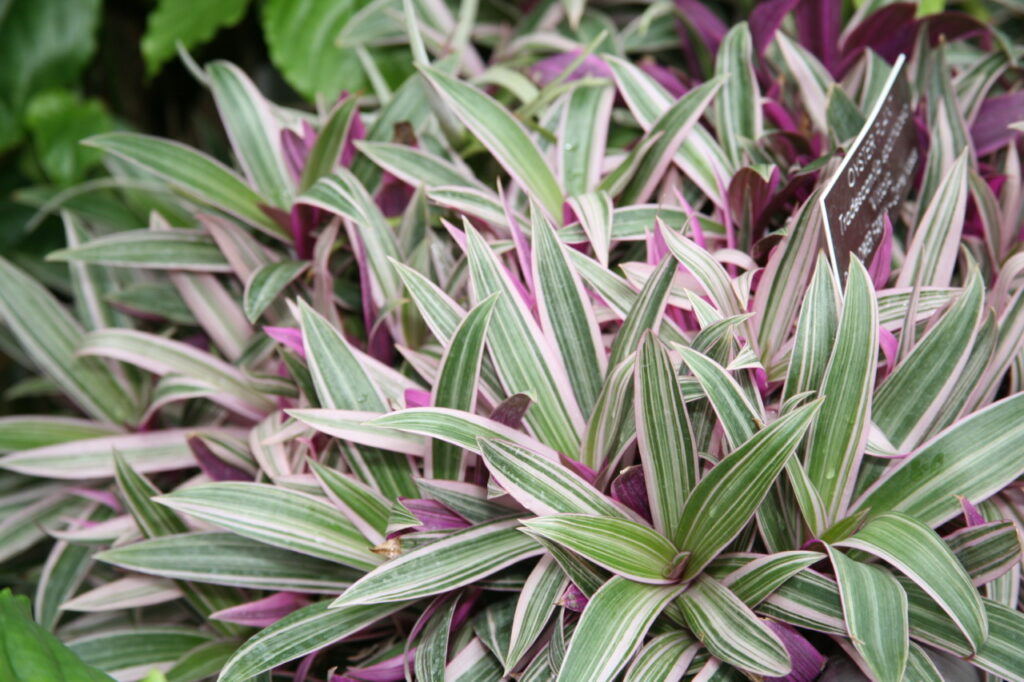
Tradescantia spathacea, named commonly “Boat Lily” or “Moses in a Basket”, is a perennial, sub-succulent herb native to Southern Mexico. This great indoor and outdoor plant is loved for its unusual inflorescence and its attractive foliage. It typically grows as a tall rosette consisting of alternate, sessile, spirally arranged, linear-lanceolate leaves with a green upper surface and a reddish-purple lower surface. Small, white three-petaled flowers appear at the base of the leaves and bloom throughout the year. These flowers are followed by 3-celled capsules. This plant is easily grown indoors in pots or containers and could be just what’s needed to bring a pop of colour into your life.
6- Tradescantia virginiana
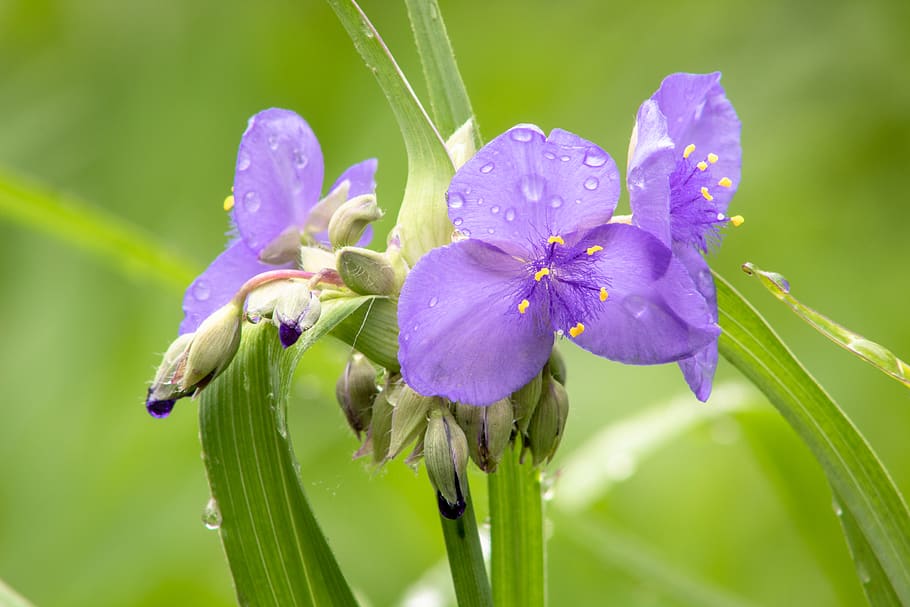
Tradescantia virginiana, known commonly by Common Spiderwort or Spider Lily, is a vigorous, clump-forming herbaceous perennial native to North America. This fast-growing plant has lance-shaped, pointed, dark green leaves with visible parallel veins. They are densely arranged along the length of the stem. The plant produces violet-purple to blue, three-petaled flowers, that open only in the morning and reveal showy, yellow stamens in a terminal cluster. This ornamental plant can be propagated by seeds but also by root division. The most important is that it needs well-drained and moist soil and full to partial shade.
7- Tradescantia Sillamontana
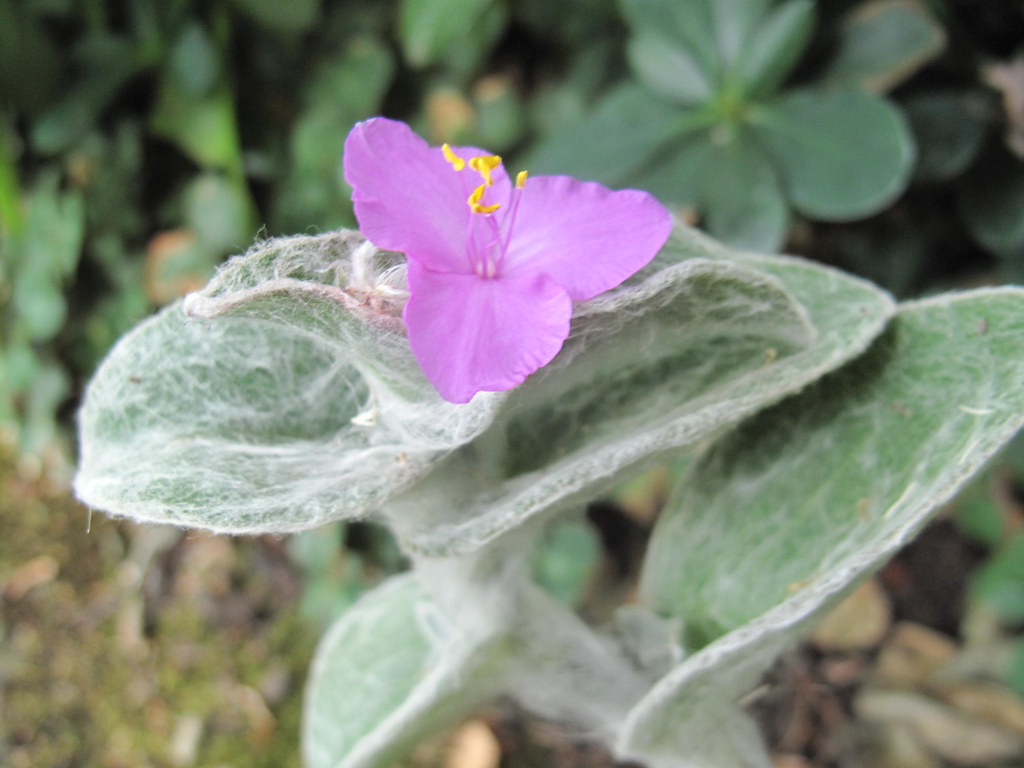
Tradescantia sillamontana, named also Cobweb Spiderwort, Hairy Wandering Jew, or White Velvet, is a charming evergreen plant native to Mexico. The foliage of this beauty makes it a so special ornamental plant; it has oval-shaped, grey-green, succulent leaves which are densely covered in silvery white wooly hairs. Three-petalled magenta-pink flowers bloom in summer at the tips of stems, between the leaves. Cobweb Spiderwort can be a great groundcover during warm winters and an easy to care houseplants in dry regions. It prefers partial shade for optimal growth but will tolerate full sun with good soil moisture.
8- Tradescantia longipes
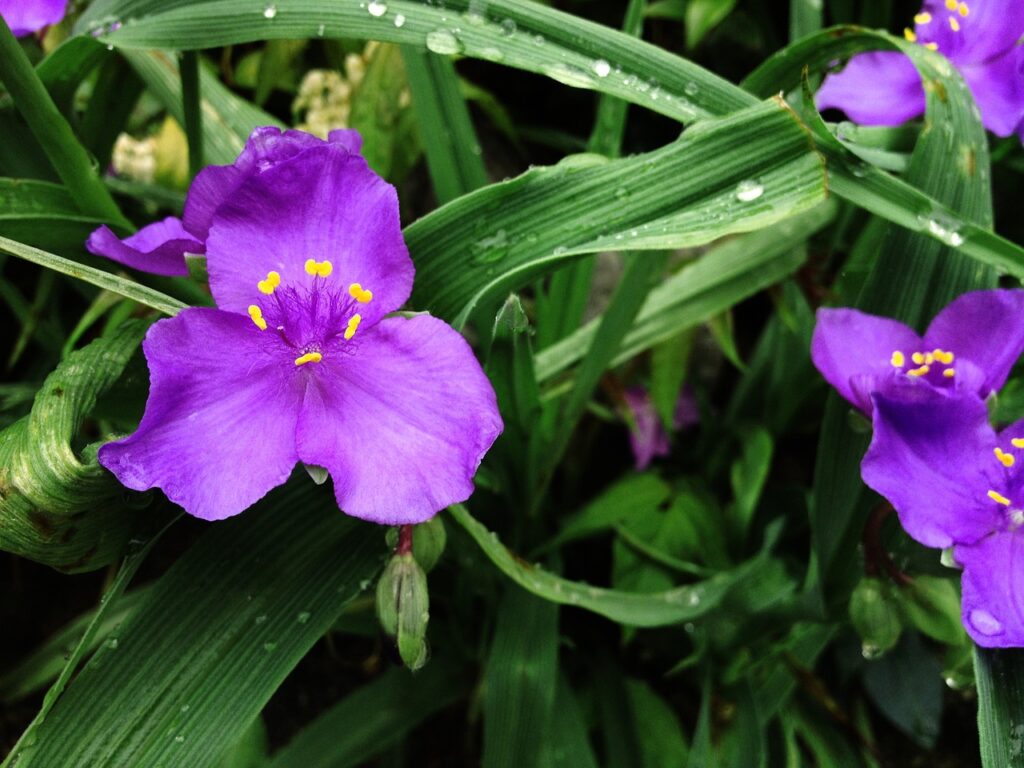
Tradescantia longipes, known as wild crocus or Dwarf Spiderwort, is a low-growing, clump-forming perennial endemic to rocky, wooded slopes in Missouri’s St. Francois Mountains and Arkansas’ Ouachita Mountains. This beauty has green, grass-like and strictly basal leaves. In addition to that, deep blue to purple, three-petaled flowers accented by fringed yellow stamens bloom in succession from April to June.
This wonderful plant makes a great, low-maintenance houseplant, with an attractive trailing habit that suits placement in hanging containers. However, it can also self-seed and spread in the garden in ideal growing conditions.
9- Tradescantia navicularis
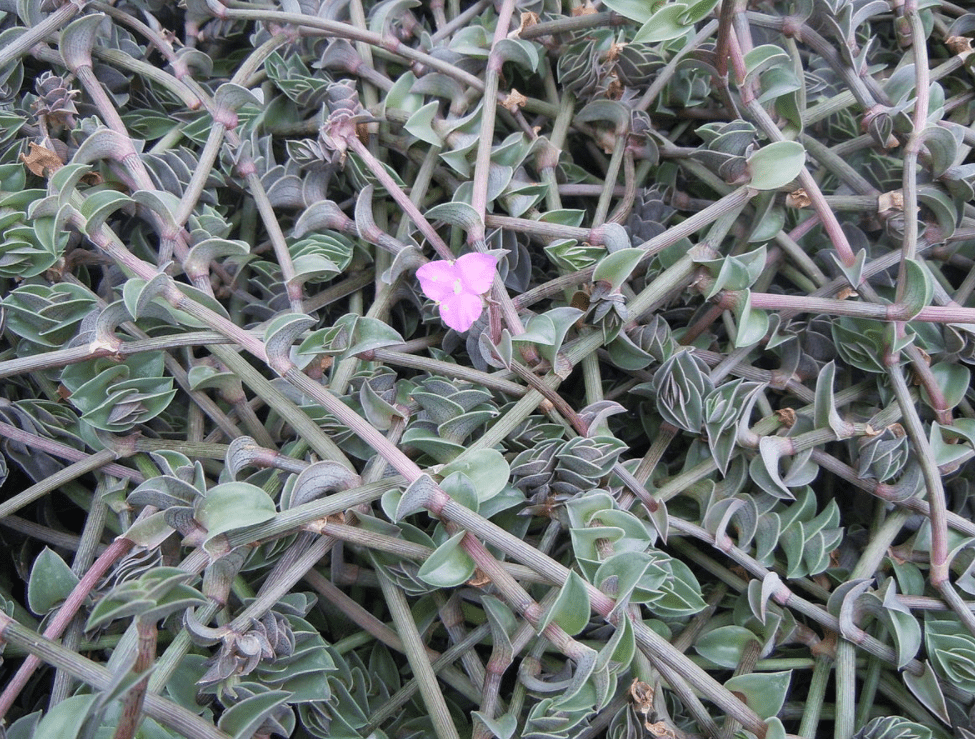
Tradescantia navicularis, known commonly as Window’s tears, Day flower or, Chain Plant, is a creeping perennial succulent native to South America. It has definitely the most beautiful, narrow fleshy lengthwise folded leaves held in a distichous arrangement on opposite sides of the stem. Inconspicuous, lilac to bright magenta flowers bloom in summer and last only one day. Like other Tradescantias, this plant likes bright indirect light or half sun and well-drained soil. Finally, water it regularly during the growing season and keep rather dry in winter.